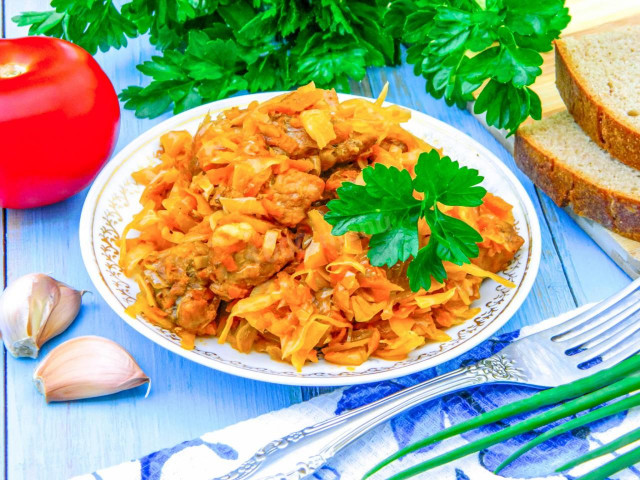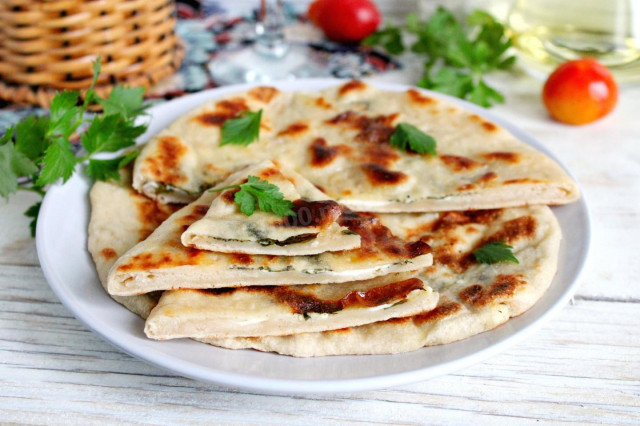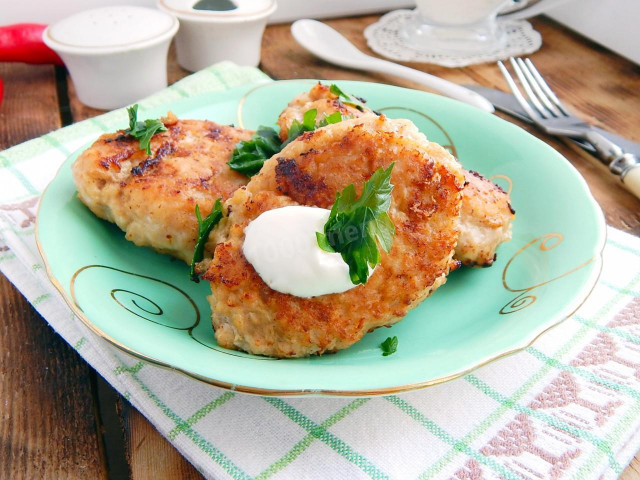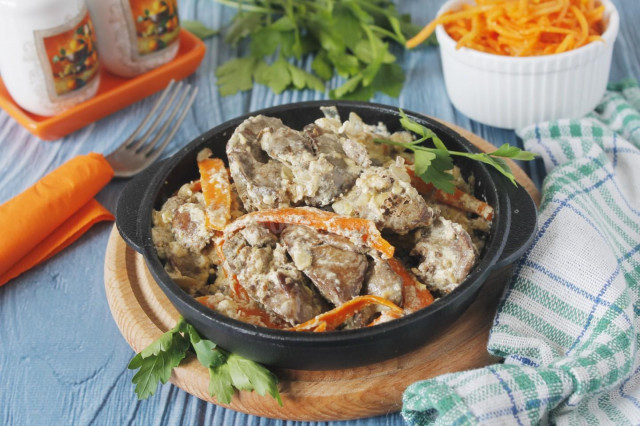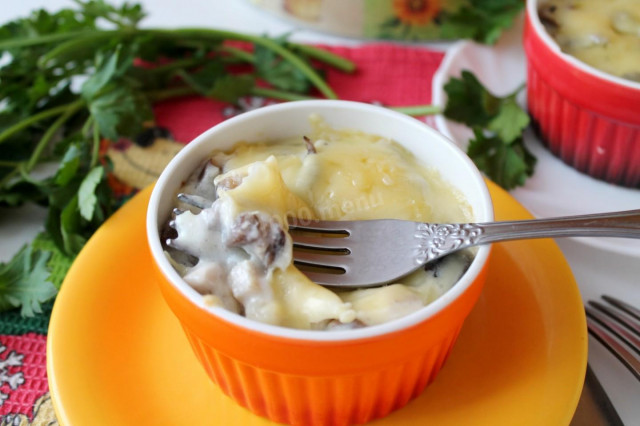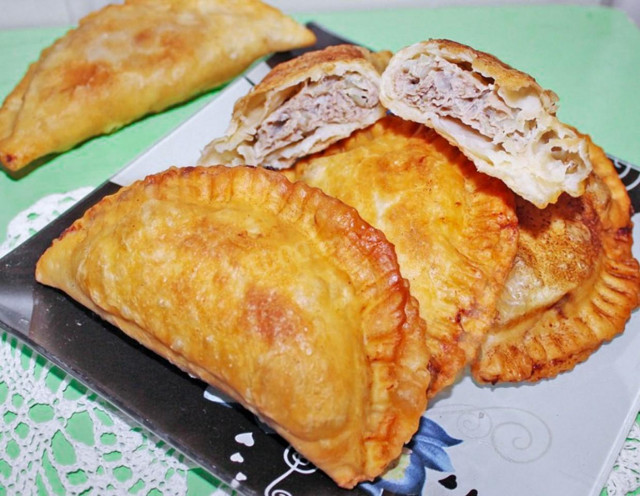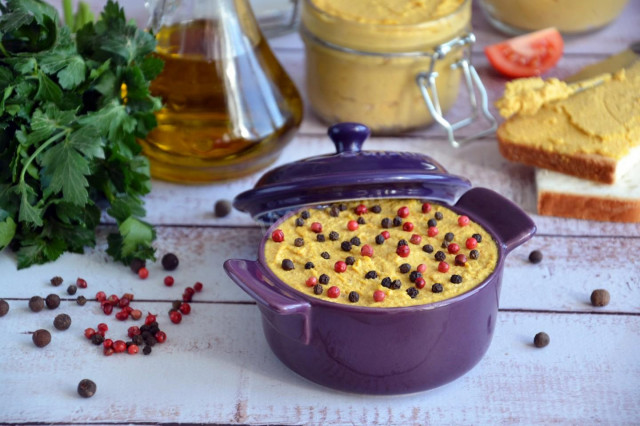Composition / ingredients
Step-by-step cooking
Step 1:
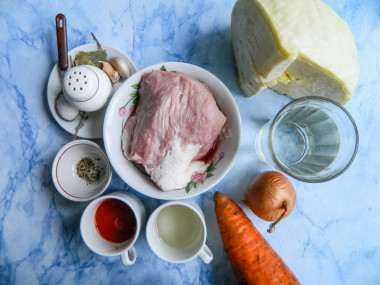
How to make a delicious hodgepodge of fresh cabbage in a frying pan? Prepare the ingredients. Take white cabbage, carrots and medium-sized onions, dried herbs, thyme, a mixture of peppers are suitable for spices. Instead of tomato sauce, you can take tomato paste. For this recipe, it does not matter which part of the carcass to choose, as it stews for a long time and will still be soft.
Step 2:
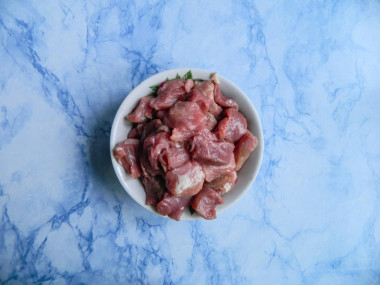
Wash the pork thoroughly and dry it with paper towels so that there is less splashing when the meat is fried. Cut into cubes no larger than 2x2 cm. Such cutting will be convenient for eating, while the meat will remain juicy.
Step 3:
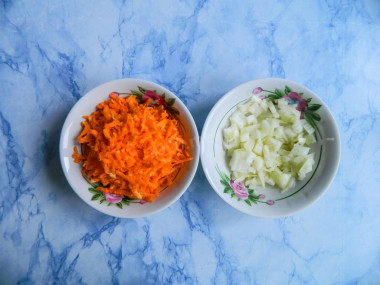
Peel and rinse the onion and carrot. Grate the carrots on a coarse grater. Cut the onion into small cubes. In this form, the vegetables will fry faster and give the filling a beautiful shade.
Step 4:
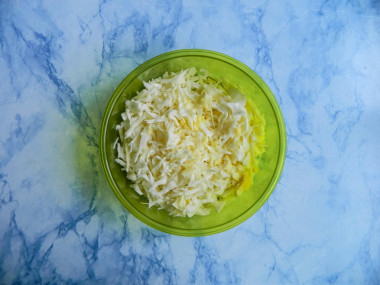
Peel the cabbage from the flaccid leaves, rinse well and dry it, putting it on a towel or paper towels. Finely chop the cabbage with a knife or a food processor.
Step 5:
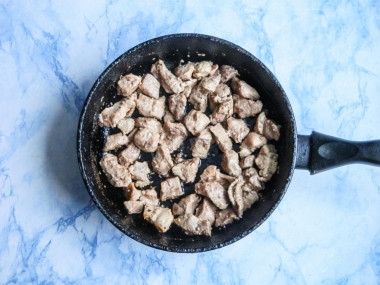
For frying meat, heat a frying pan with a thick bottom over medium heat and pour half of the sunflower oil on it. Take a frying pan of such a size that all the ingredients for the hodgepodge (meat and vegetables) fit in it. Transfer the chopped meat, add a little salt and pepper and fry over medium heat until light golden brown. It is often not necessary to interfere so that the meat retains its juiciness.
Step 6:
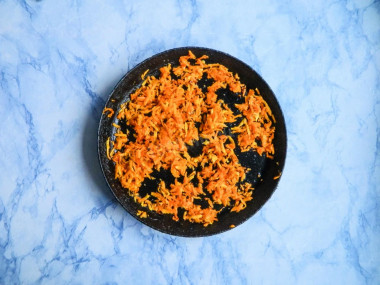
In a separate frying pan, make a roast. Heat a frying pan, carefully, so as not to burn yourself, pour the remaining vegetable oil on it. Since carrots are cooked longer than onions, fry grated carrots first. Fry over medium heat, stirring occasionally, for about 2 minutes.
Step 7:
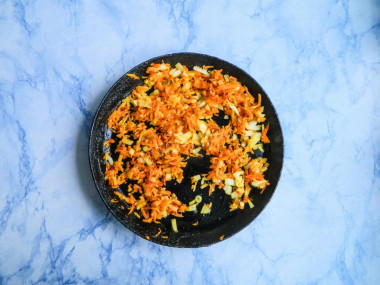
When the carrots start to get softer, put the chopped onion in the pan and fry for another 3 minutes over medium heat. Be sure to stir so that the vegetables are evenly fried and do not dry out.
Step 8:
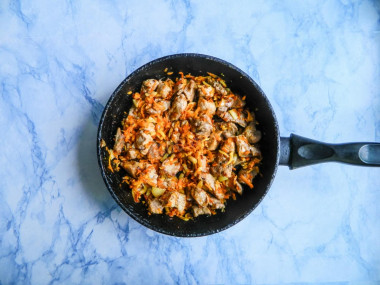
Transfer the roast to the meat, stir and fry for 2 minutes on low heat.
Step 9:
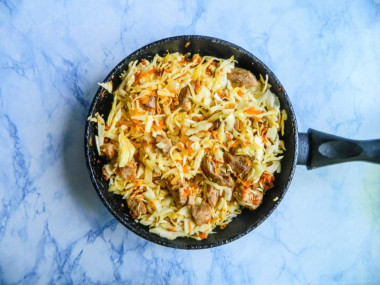
Add the chopped cabbage, stir and simmer for 5 minutes over medium heat.
Step 10:
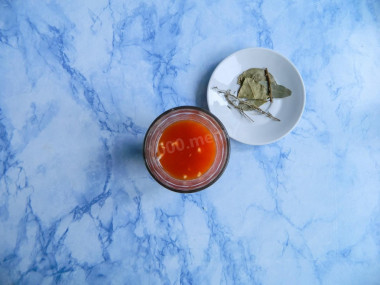
Prepare the sauce. Chop the garlic with a press. In a glass of water, add tomato sauce, sugar, a little salt and garlic. Mix everything well. Pour the prepared sauce over the hodgepodge, put bay leaves, ground black pepper and dry spices on top (you can do without them). Stir the hodgepodge so that all the ingredients are evenly distributed over the dish.
Step 11:
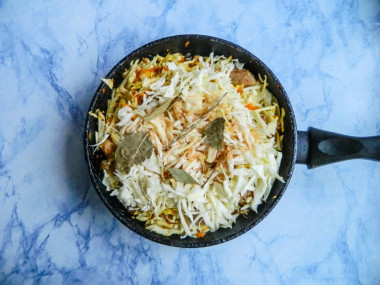
Cover with a lid and simmer the hodgepodge over medium heat. After 20 minutes, mix and taste with salt, add a little salt if necessary. Simmer for another 20 minutes. The cooking time depends on the cabbage, it should become soft. If there is too much liquid left in the finished hodgepodge, remove the lid so that it evaporates. Serve the hodgepodge, sprinkled with herbs. It is delicious both hot and cold.
In addition to pork, any other meat can be used in this dish. Keep in mind that the cooking time, as well as the taste and calorie content of the dish will change. For example, beef is cooked longer than pork, and chicken fillet or turkey is less.
Use oil with a high smoking temperature for frying! Any oils are useful only until a certain temperature is reached - the point of smoking, at which the oil begins to burn and toxic substances, including carcinogens, are formed in it.
Unrefined oils, with rare exceptions, have a low smoking point. There are a lot of unfiltered organic particles in them, which quickly begin to burn.
Refined oils are more resistant to heating, and their smoking point is higher. If you are going to cook food in the oven, on a frying pan or grill, make sure that you use oil with a high smoking point. The most common of the oils with a high smoking point: refined varieties of sunflower, olive and grape.
Since the degree of salinity, sweetness, bitterness, sharpness, acid, burning is individual for everyone, always add spices, spices and seasonings, focusing on your taste! If you put some of the seasonings for the first time, then keep in mind that there are spices that it is especially important not to shift (for example, chili pepper).
Caloric content of the products possible in the composition of the dish
- Pork fat - 333 kcal/100g
- Pork meat - 357 kcal/100g
- Pork - low-fat roast - 184 kcal/100g
- Pork chop on a bone - 537 kcal/100g
- Pork - schnitzel - 352 kcal/100g
- Pork Shoulder - 593 kcal/100g
- Boar's leg - 113 kcal/100g
- Pork - 259 kcal/100g
- Carrots - 33 kcal/100g
- Dried carrots - 275 kcal/100g
- Boiled carrots - 25 kcal/100g
- Garlic - 143 kcal/100g
- Bay leaf - 313 kcal/100g
- Ground black pepper - 255 kcal/100g
- Granulated sugar - 398 kcal/100g
- Sugar - 398 kcal/100g
- Salt - 0 kcal/100g
- Water - 0 kcal/100g
- Onion - 41 kcal/100g
- Spices dry - 240 kcal/100g
- White cabbage - 28 kcal/100g
- Boiled white cabbage - 21 kcal/100g
- Sunflower oil - 898 kcal/100g
- Refined sunflower oil - 899 kcal/100g
- Hot tomato sauce - 99 kcal/100g

